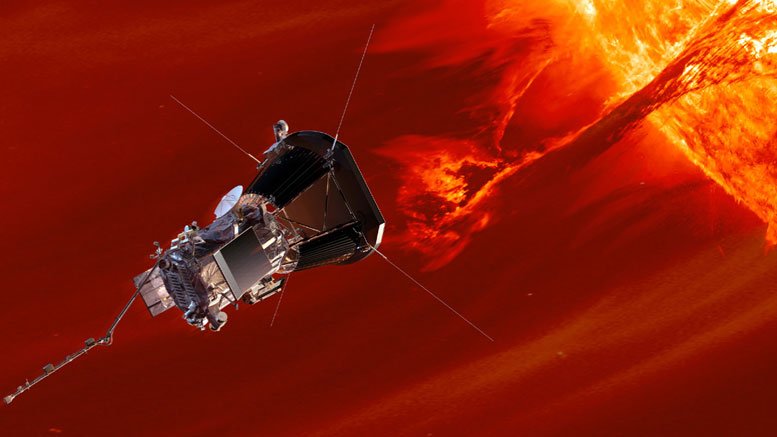The Solar Probe Plus space craft of NASA’s mission of Touch the Sun is now going to be launched in the year 2018 on July 31st. The preparation of the space craft and this mission began back in the year 2009 and there were around 5 proposals of investigation chosen by the NASA and some other scientists as well.
The Solar Probe Plus is going to work two main aspects and help the scientists to solve to mysteries
- Why is the Sun’s outer atmosphere i.e. the Corona hotter than the solar surface?
- How will the Solar Wind accelerate and affect the Earths living?
The first ever instrument of the Solar Probe Plus is all set with a few electrical connections and wrench Solar Probe Plus is all set for its first ever instrument, The EPL, LO particle detector, which has half of the integrated science invention of the Sun’s instrument site.
This was installed on the April 17th 2017, at the John Hopkins Applied Physics laboratory which is in Laurel, Maryland.
With the EPL-lo the Solar Probe Plus can be used as an observatory, and the Solar Probe Plus project manager appointed by the Applied Physics Laboratory, Sir Andrew Driesman said that they are looking forward to integrate some other instruments as well on this spacecraft, this all for subsequent testing on orbit science operations and at the end to come up with some new discoveries.
These instruments are designed and build by the Applied Physics Laboratory and are also helping to build the Solar Probe Plus spacecraft, EPL-Lo enables it to measure low energy particles which are streaming from the Sun. It is more of like combining the low energy particles and EPL-lo data with the high energy particles which is EPL- Hi component. This entire combination will help to know more about the mechanisms that are produces, accelerated and even know about the transport of these energetic particles which are in the inner heliosphere which is totally spread from the sun’s outer surface i.e. the corona till the orbit of the mercury.
While measuring the energetic particles which are near the sun and simultaneously flying an entire suite of instruments on the Solar Probe is a very big and a record breaking event in the 60 year of history of science. However this type of instrument is also been used by the Applied Physics Laboratory in their previous researches, and in the next extension it will have such time of the flight which will also include energy instruments.
This includes orbit of mercury on messenger, flew by Pluto on new horizons and are now circling around the Earth on the Van Allen probes as well as the Jupiter for the Juno mission.
These all instruments are outcome of the leadership that came from the Don Mitchell in instrument concepts and design, he does it with the teamwork of all the scientists, engineers as well as programmers and all the managers who willing work at the Applied Physics Laboratory.
The principal investigator of the Integrated Science Investigation of the Sun are David McComas of Princeton University, and the Southwest Research Institute, San Antonio, manages the IS¤IS suite. NASA’s Jet Propulsion Laboratory is providing the EPI-Hi instrument, scheduled for integration later this week.
The solar probe plus will be now carrying some three other instruments as well suite which will be including the Solar Wind Plasma Suite and also the SWEAP which stands for Solar Wind electrons Alphas and also the Protons, investigation.
Not only this but the Solar Probe Plus will also be carrying an electric and magnetic field suite and this is primarily known as the FIELDS. To capture everything the probe will also be having wide field imager called WISPR.
This state of art payload which will be riding aboard a probe that will fly closer to the Sun’s atmosphere than any other space craft has ever been to in the history.
The instrument of this Solar Probe Plus are designed in such a way that it can detect the and also determine the structure and dynamics of the Sun’s coronal magnetic field. Not only will this but the Solar Probe Plus also help the scientists to determine the Solar wind and its acceleration.
The launch will be initiated on the 31st July 2018 within a period of a 20 day window and the Probe is expected to reach the orbit and its destination around December 2024 so the duration of the mission is planned for around 6 years and 321 days.
For this long the mission is designed to stretch and even take the harsh temperature of the Sun, where the intensity of the Sun is around 520 times higher than the Earth.
The Solar Probe Plus cost’s about 1.5 billion dollars which will give the Human life worthiest information.
